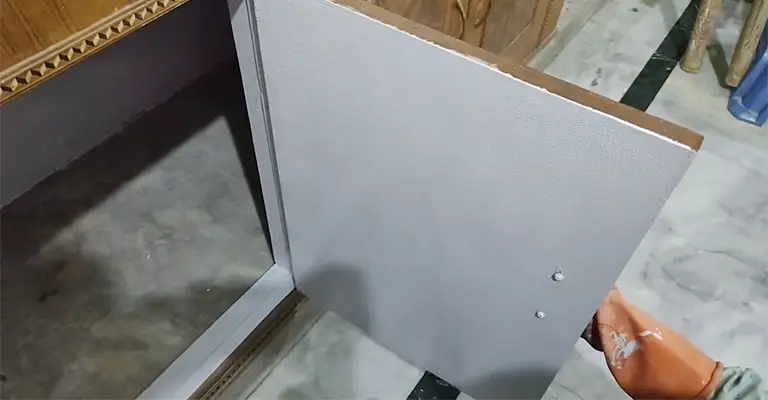Are you noticing that your freshly painted white wood surfaces are turning yellow? If so, you may be wondering what could be causing this issue.
Yellowing white paint on wood can be a frustrating problem, but it’s essential to understand that there could be several factors at play.
In this blog post, we’ll delve into the possible causes of yellowing white paint on wood and offer tips on how to prevent it from happening.
Whether you’re a DIY enthusiast or a professional painter, this information can help ensure that your white paint stays bright and true.
There could be several reasons why your white paint is turning yellow on the wood. Here are a few possible causes:
Age: Over time, all paints will be yellow to some extent due to the natural aging process. This is especially true for oil-based paints, which yellow more quickly than water-based paints.
Exposure To Sunlight: UV rays can cause paint to turn yellow, particularly if the paint is exposed to direct sunlight for long periods of time.
Contamination: If the wood surface was not properly cleaned before painting, dirt, oils, or other contaminants could cause the paint to be yellow.
Poor Quality Paint: If the paint you used was of poor quality or had been stored improperly, it may yellow more quickly than expected.
In humid environments, varnish hardens, causing vapors to settle on the paint. Water-based paints that are applied before urethane-based varnishes will quickly turn yellow when exposed to humidity after the varnish has hardened.
They are easily recognizable due to their strong smell. To prevent yellowing, it’s important to use high-quality paint and to follow proper surface preparation and application techniques.
You can also try using a paint with a UV inhibitor to help protect against yellowing caused by sunlight. If you’re unsure of the cause of the yellowing, it may be a good idea to consult a professional painter for advice.
Other Common Reasons for Yellowing Paint
There are several items that can turn yellow as a result of white paint turning yellow, painted not only on walls but also on other items. You may have noticed white-painted cabinets or white paint on wood turning yellow over time.
1. Oil Based Paint
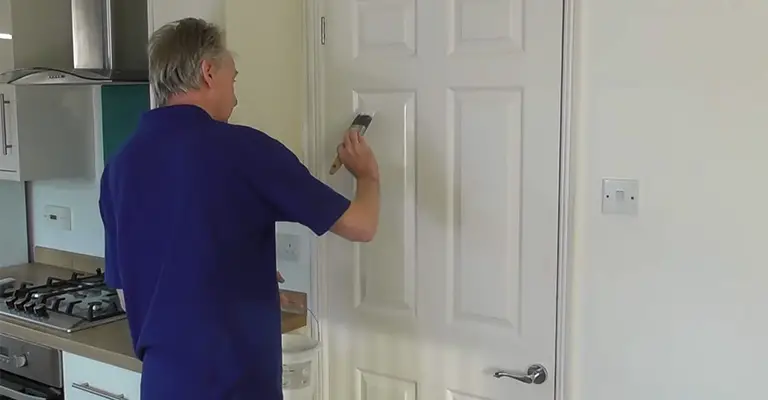
There are a number of reasons why paint yellows, including the makeup of the paint. You are most likely dealing with oil-based paint if your paint is yellowing.
The benefits of oil-based paints include hiding imperfections and resisting scuffing. However, they do yellow when applied to white shades.
2. Moisture
Besides moisture, heat is another common environmental factor that causes paint to turn yellow. Water leaks are the first clue you should look for when you suspect one is nearby.
Cooking and smoking at home can also release moisture into the air, which settles on the paintwork, resulting in yellow stains.
Since white-painted cabinets are often located in places that receive more moisture, moisture is a common cause of white paint turning yellow on wood. There is a lot of exposure in kitchens and bathrooms, for example.
3. Light

Might you have noticed the paint behind an older cupboard no longer matches the exposed wall after moving it aside?
In addition to lighting conditions, how well paint color is preserved and how quickly it yellows can also be affected by light patterns.
Whenever yellowing occurs as a result of insufficient light, chromophores are responsible. The chromophores produced by oil-based paint are naturally occurring during the drying process.
By exposing them to light, chromophores are broken down. Keeping your white-painted wall exposed to light will likely maintain its beauty and whiteness. There is a chance that the chromophores behind the furniture will have a yellow hue.
What To Do About Yellowing Paintwork?
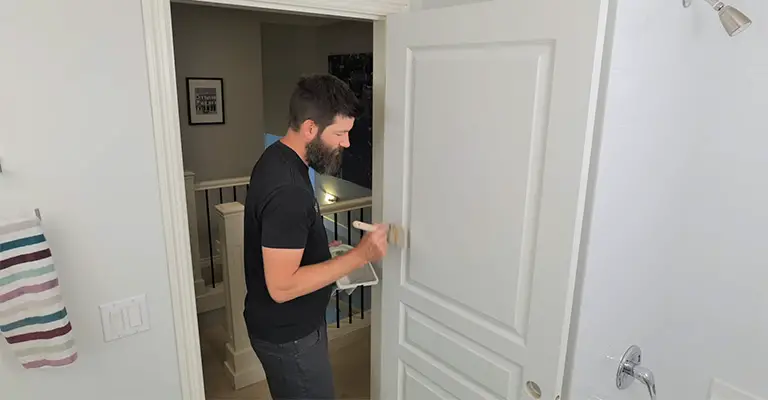
Don’t believe your eyes if you think that once-white cabinet, door, or wall looks yellow now!
The downside of oil-based paint is that it can turn yellow over time, which is especially unattractive on whites and off-whites. It also has the advantage of being dent and scuff resistant.
There is a possibility of yellowing paintwork due to environmental factors or oil-based paint drying and aging processes. Depending on what caused the discoloration, you may be able to reverse it or must address it another way.
Is Yellowing Paint Reversible?
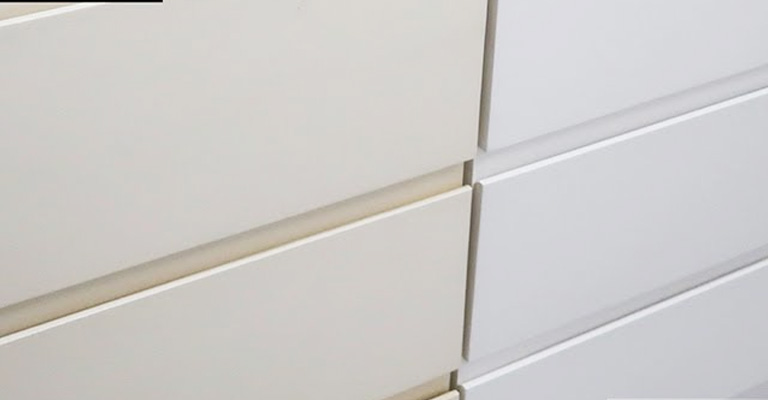
Yes, of course! Color changes in yellowing paint may be reversible, depending on the cause.
The problem is often quickly resolved if the paint is yellow due to a lack of light. A chromophore is a material produced when light cannot reach paintwork.
The chromophores in paint break down when exposed to light, making the paint appear transparent. When you find a yellowing patch behind furniture, just move it so the light can shine through.
Using lamps to illuminate the yellowed paintwork will speed up the process, as chromophores break down both naturally and artificially.
In some cases, results can be seen in just a day; however, it will probably take a while for the process to be completely transformed.
There is also hope that yellowing paint caused by moisture can be corrected. Water leaks are the most common cause of the moisture, so find the leak and fix it, then sand the stained area down.
A stain-blocking primer in the same color as the rest of your paintwork should be applied over the stain. Professionals can remove cooking or smoking stains, or trisodium phosphate can be used to remove them.
It is important to seek advice on the ratio of each ingredient and protect your skin and eyes if you try this at home.
If Moisture Is To Blame, Fix Related Leaks And Remove Stains
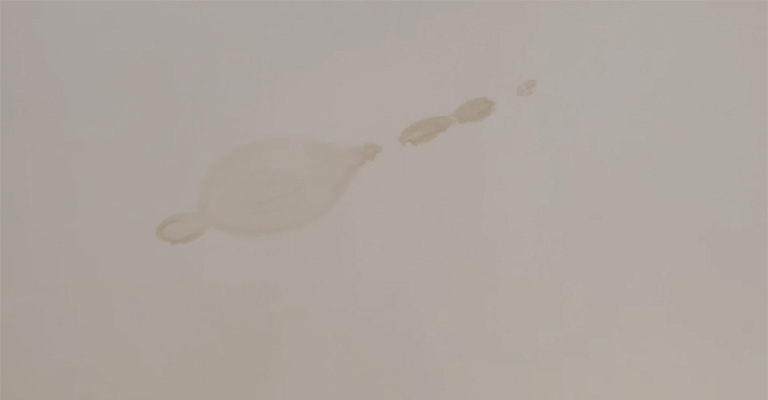
There is also the possibility that water, cooking grease, or cigarette smoke can contribute to a yellow tinge to paintwork.
You need to determine the source of the leak and fix it if you suspect that a leak causes a water stain.
You can then use a paintbrush to cover the stain with stain-blocking primer in the same shade as the painted surface after gently sanding down the stain with medium-grade sandpaper.
You can remove cooking fumes, grease, or cigarette smoke by donning gloves and goggles, diluting a quarter cup of trisodium phosphate in a gallon of water, and wiping the stain down with a sponge soaked in the solution. Clean a rag and dry the area.
Apply Water-Based Paints When Necessary
If none of the above methods work for you, it’s likely your wall’s oil paint is yellowing naturally because of oxidation. It is easy to solve this problem by priming and re-painting water-based paint.
By evaporating, it will dry rather than oxidize, which would dull colors. Ask a professional to prime and paint the area if you want to achieve exceptional results.
In addition to making the paint dry and hard, alkyds (synthetic resins) or plant-based oils may also turn it yellow over time.
Even though oxidation-induced yellowing cannot be reversed, you can conceal it by priming and painting over oil-based paint with water-based paint that dries through evaporation rather than oxidation.
Remember that water-based paints labeled “all-acrylic” or “100 percent acrylic” are vibrant.
Compared to regular latex paint, which generally contains vinyl resins or a mixture of vinyl and acrylic resins, this paint contains high-quality acrylic resins that produce a more colorfast finish.
Minimize Future Yellowing Through Proper Oil-Based Paint Application
The best way to prevent yellowing paintwork, as with other paint problems, is to prevent it. When applying oil-based paint to your next project, use these tips to minimize future yellowing:
- It is only advisable to apply oil-based paint in areas with plenty of natural or artificial light.
- Apply oil-based paint away from radiators and heat ducts, as their heat can accelerate oxidation.
- Cooking fumes can stain paintwork if left unattended, so install exhaust fans in the kitchen to prevent them from lingering.
- If you smoke in a room with oil-based paintwork, you will want to avoid stains.
- When you plan to paint different surfaces in the same room with water- and oil-based paints, thoroughly dry the paint before moving on to the oil-based paint. Oil-based paint can yellow and oxidize sooner, whereas water-based paint gives off ammonia as it dries.
- If you plan on a painting near materials that naturally change color over time, such as stained wood, use oil-based paint only.
- When yellowing occurs near white surfaces that are made to remain white, such as colorfast tiles, strategically positioned white surfaces will appear less jarring.
Final Tips
There is no question that solvent-based paint goes “off-color” over some time, but this is amplified in areas without natural light.
Therefore, professional workers now only paint interior woodwork with water-based/acrylic paints since they don’t yellow over time. My recommendation would be to use a fully water-based system.
Furthermore, I recommend that you use a suitable water-based undercoat/primer. A slight thinning of the paint with water will ensure the best finish.
Doing this will allow you to keep the edges wetter for longer and reduce brush marks. When you apply the paint, don’t overwork it, just get as much as possible and let it dry.

